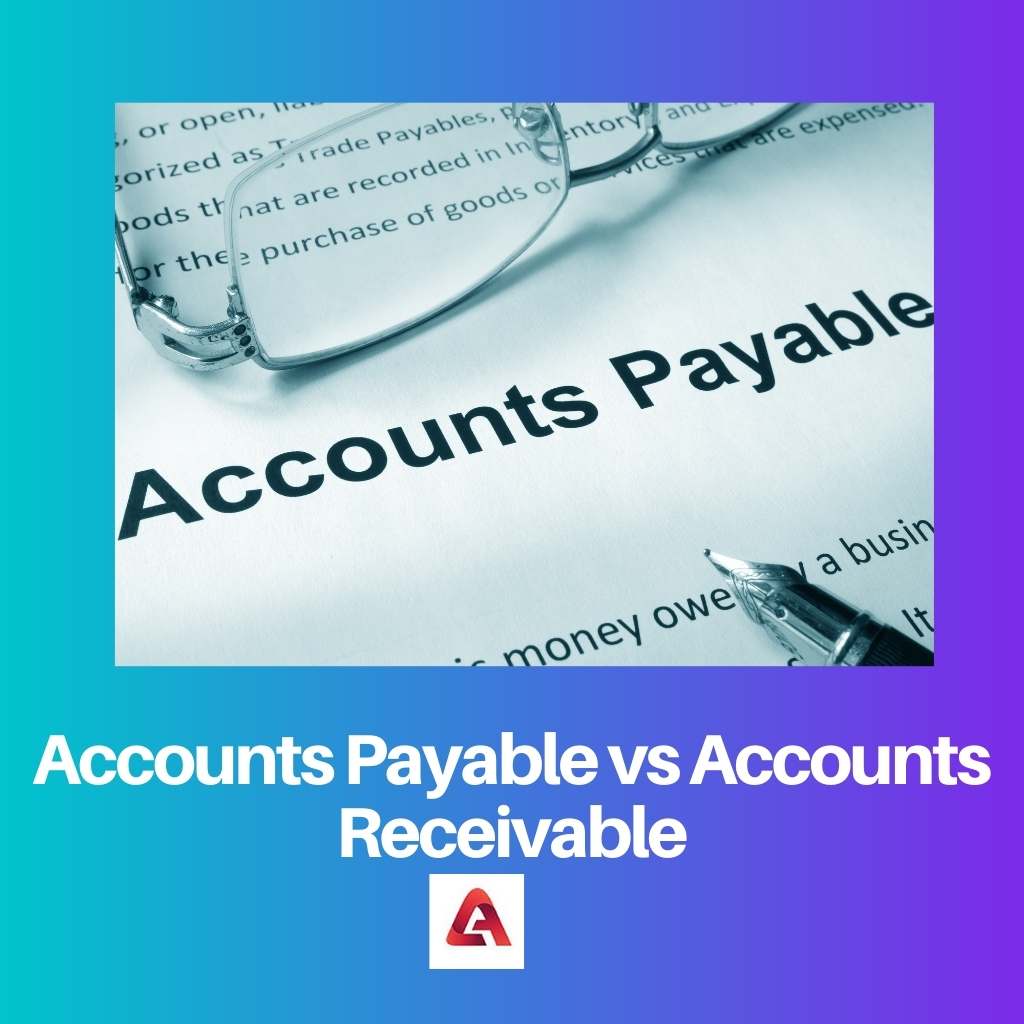Both the terms accounts receivable and accounts payable are mainly used in the accountancy language. The students with a commerce background are well aware of these such terms, but sometimes they are used interchangeably due to their similarities in pronunciation. Simply put, accounts receivable is the amount we have yet to receive, and accounts payable is the amount we owe (to pay).
Key Takeaways
- Accounts payable represent the money a company owes to its suppliers or vendors, while accounts receivable represent the money owed to a company by its customers.
- Accounts payable arise when a company purchases goods or services on credit, whereas accounts receivable result from selling goods or services on credit.
- A company records accounts payable as a liability and accounts receivable as an asset on its balance sheet.
Accounts Payable vs Accounts Receivable
The difference between accounts receivable and accounts payable is that the accounts receivable is the amount that we are yet to receive. It is also known as current assets (short-term assets), whereas the accounts payable are the amount which we need to pay (also known as short-term liabilities). Both the accounts receivable and payable happen during a credit purchase or sale.

Accounts payable is used in the accounting language when a credit purchase occurs wherein the buyer gets the goods immediately and pays them later. Here, a liability is created for the credit purchase. It is also known as the short-term liabilities of the company, and it leads to the outflow of cash in the future.
Accounts receivable happens due to credit sales wherein the customer takes the good immediately and pays the amount at a later date. It is also known as short-term assets. It leads to income generation in the company in the future. The short form for accounts receivable is A/R. It is an asset for the company as it is going to bring money into the company in the future.
Comparison Table
| Parameters of Comparison | Accounts Payable | Accounts Receivable |
|---|---|---|
| Meaning | It is the amount a person owes (to pay) | It is the amount a person should receive (to be paid) |
| Abbreviation | It is known as A/P. | It is known as A/R. |
| Asset or liability | It is a short-term liability for the company. | It is a short-term asset for the company. |
| Happens due to | It happens due to a credit purchase. | It happens due to a credit sale. |
| Others | It is advised for a company to have less A/P | It is advised for a company to have more A/R |
What are Accounts Payable?
The term account payable might sound confusing if someone does not hail from a commerce background. No matter what one’s education is, it is necessary to be aware of the differences between the accounts of words payable and accounts receivable. Accounts payable is used to denote the general ledger that showcases a company’s obligations or the amount to be paid.
To put it in simple terms, accounts payable is used to denote the general ledger that informs about a company’s obligation to pay short-term debts to creditors and suppliers. As the name is self-explanatory, it suggests the amount that needs to be paid back. The total accounts that need to be paid back by a company will be mentioned on the balance sheet under the current liabilities.
These accounts payable must be paid back within the given time to avoid any cases of defaults. Usually, in the corporate world, the accounts payable would be to another business entity. That business would list the transaction as accounts receivable.
The word accounts payable is also termed into an acronym AP. The word AP is used to refer to the departments that look after the accounts payable in a corporate company. The department makes payments to creditors and other suppliers.

What are Accounts Receivable?
The term accounts receivable might sound confusing if someone does not hail from a commerce background. No matter what one’s education is, it is necessary to be aware of the differences between the terms accounts payable and accounts receivable. Accounts receivable is used to denote the balance of money that is due for a particular company.
To put it in simple terms, accounts receivable is used to denote the balance of payment that is due for a company. Customers who have used the products or services provided by the company and have not paid the appropriate amount are the due amount. The account receivables are mentioned on the balance sheets as current assets.
Accounts receivable refers to the number of outstanding invoices that a company has in possession. It refers to the amount of money that the clients of the company owe for the products or services used by them. These payments are required to be made within a short period. Usually, it is between a few days and a fiscal year or a calendar year.
The companies that have accounts receivable mention them as assets as the customers are legally obliged to pay the money back to the company. The account receivable means that a company is yet to collect the money from the purchaser.

Main Differences Between Accounts Payable and Accounts Receivable
- Accounts payable is the amount which a person owes to the creditors, whereas accounts receivable is the amount that a business should receive from its debtors.
- The abbreviation for accounts payable is A/P, whereas the abbreviation for accounts receivable is A/R.
- Accounts payable is formed when there is a credit purchase. Similarly, the accounts receivable is formed when there is a credit sale.
- Accounts payable generate cash outflow, whereas accounts receivable generate inward cash flow.
- Accounts receivable is a short-term asset for the company, whereas accounts payable is a short-term liability for the company.

- https://link.springer.com/article/10.1007%2Fs11156-009-0124-0
- https://onlinelibrary.wiley.com/doi/abs/10.1111/j.1540-6261.1992.tb03982.x